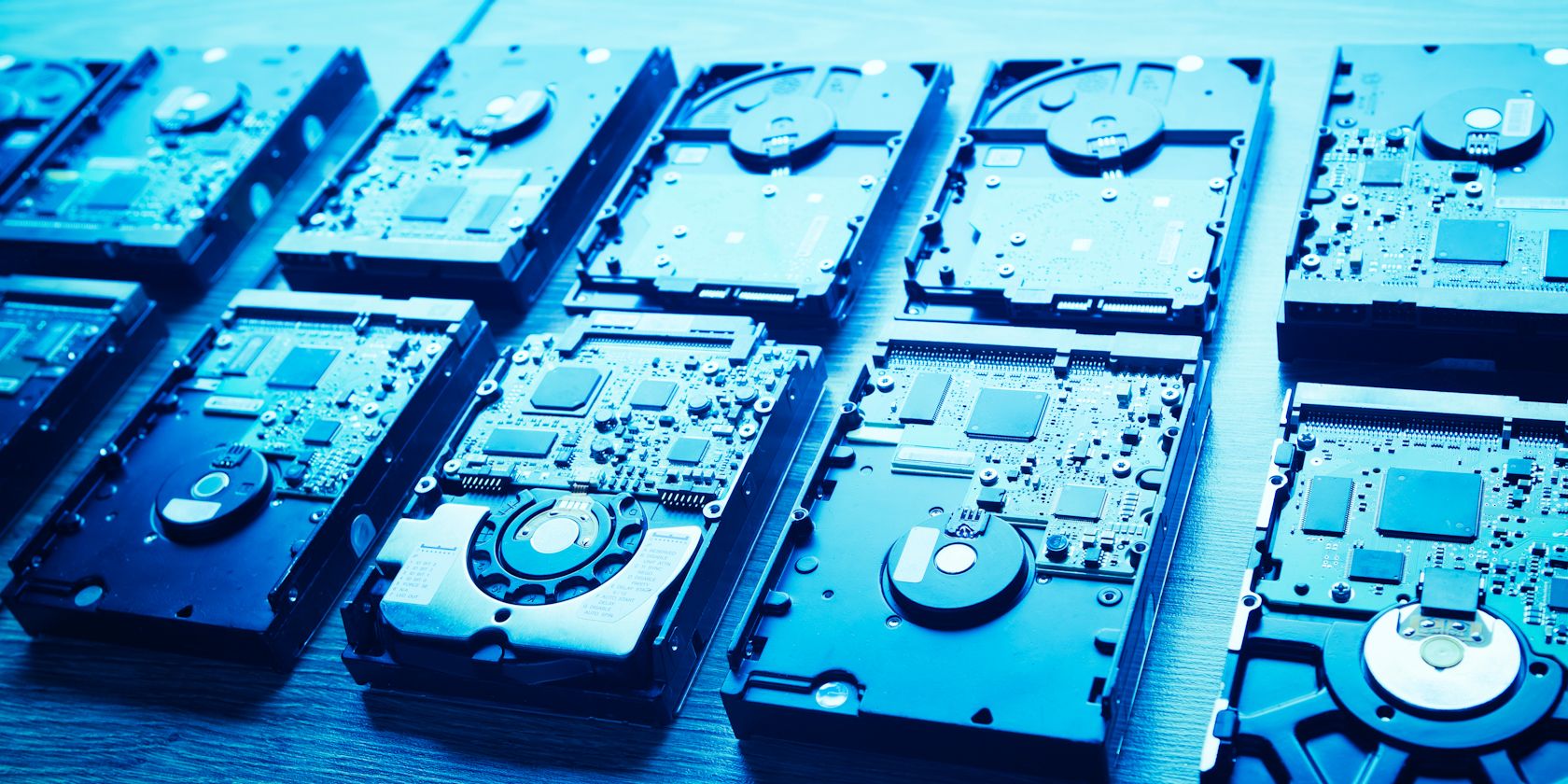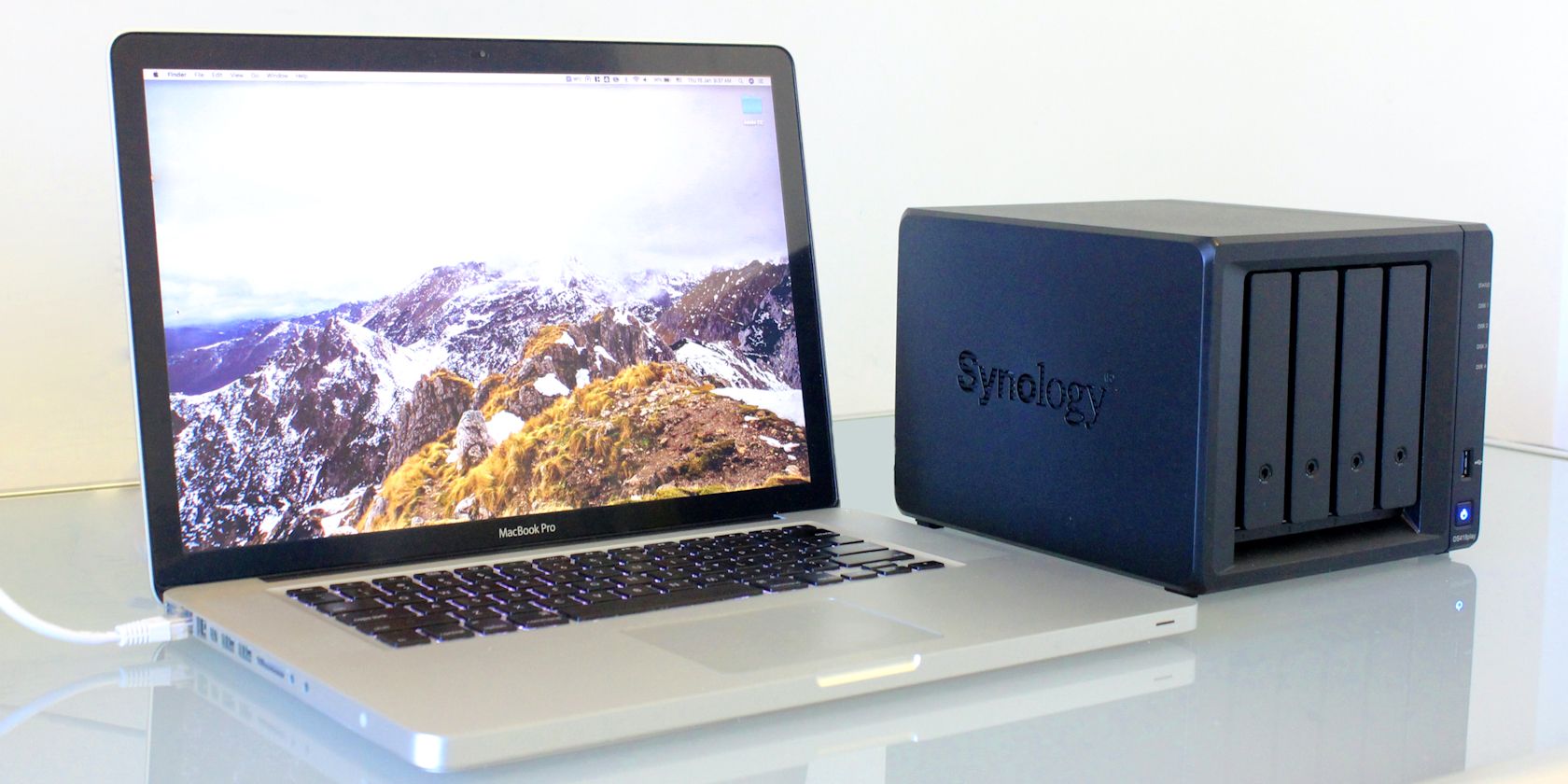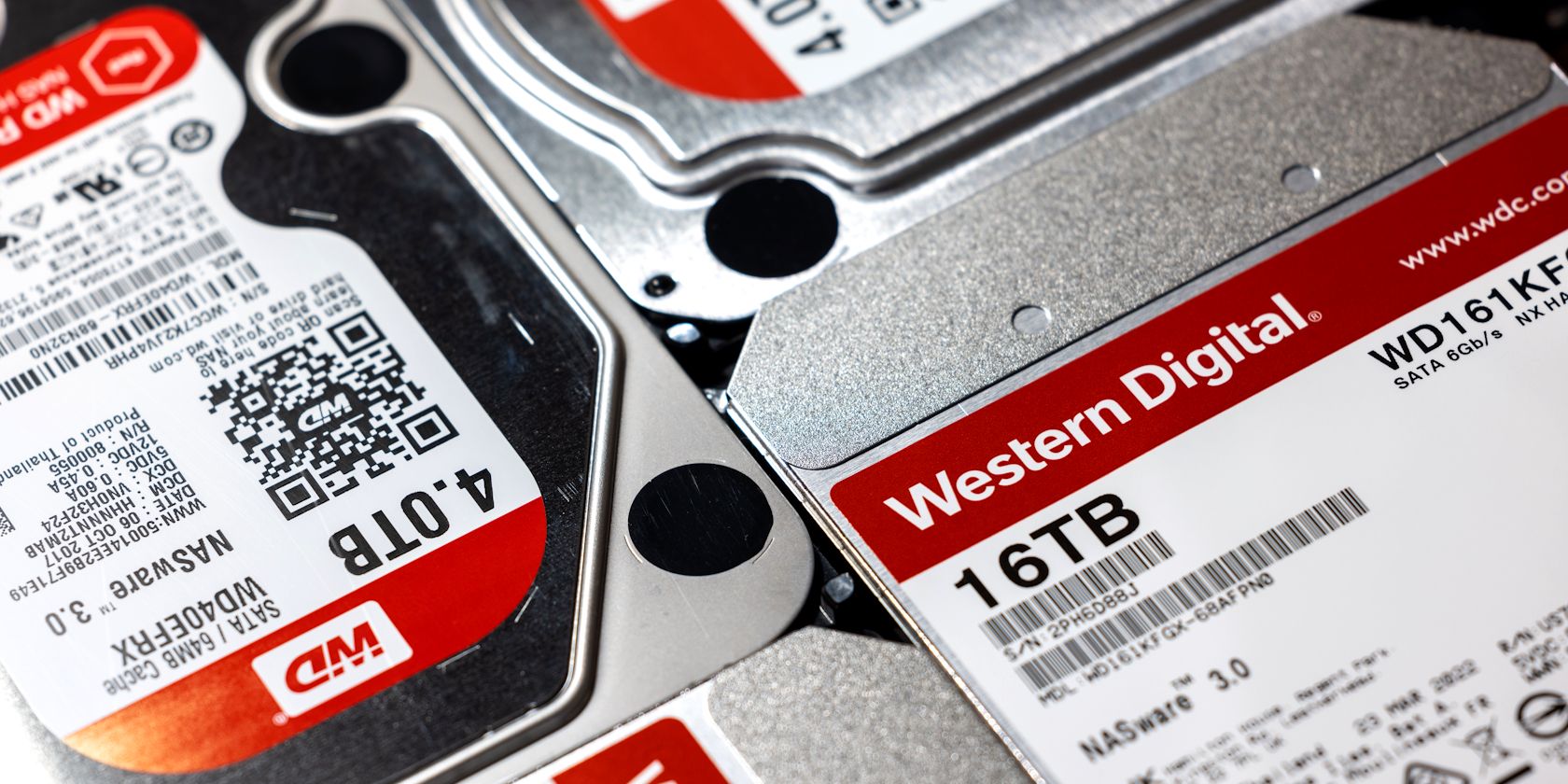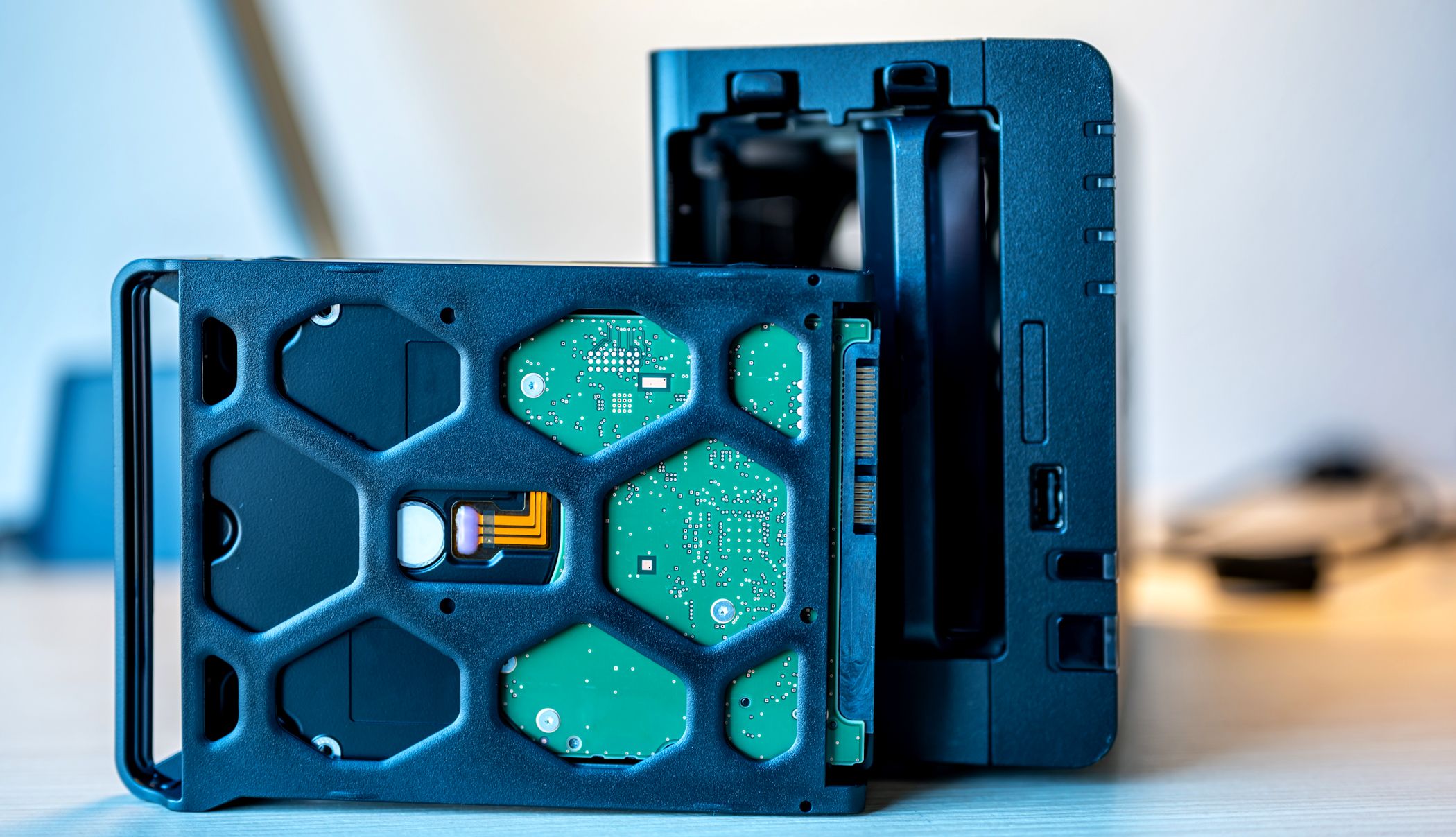Key Takeaways
- NAS drives are specialized hard drives designed for network storage systems. They are engineered for continuous, 24/7 operation with multiple users accessing data simultaneously.
- When buying a NAS drive, consider the drive type (specifically designed for NAS systems), capacity (based on current and future storage needs), and speed/performance (measured in RPM and cache size).
- Reliability, durability, compatibility, noise/power consumption, price per terabyte, and RAID support should also be considered when choosing a NAS drive. Regular desktop drives may not have the necessary firmware and tuning for NAS use.
Building a new NAS? Upgrading your existing one? Then you'll want to know about NAS drives and their many configurations, options, and specs.
What Is a NAS Drive?
A Network Attached Storage (NAS) drive is a specialized hard drive designed specifically for network storage systems.
Unlike standard desktop hard drives, NAS drives are engineered to operate in the unique environments of NAS systems, which typically involve continuous, 24/7 operation with multiple users accessing data simultaneously.
Furthermore, NAS drives typically feature enhanced reliability and durability and are built to withstand the rigors of constant use. They often come with technology to reduce vibration, which is crucial in multi-bay NAS units, and have firmware optimized for network storage use, improving performance and compatibility with NAS devices. NAS drives are also designed to handle the higher heat output that can occur in closely packed NAS enclosures.
Most NAS drives are ideal for home and business applications, though some enterprise-level NAS drives will come with additional data storage, sharing, and backup support.
So, what should you look out for when buying a NAS drive?
1. Drive Type
When selecting drives for a NAS, opting for NAS-specific drives rather than standard desktop hard drives is crucial. NAS drives, such as WD Red, Seagate IronWolf, or Synology HAT5300, are designed for the unique demands of NAS systems. These drives typically feature technology to reduce vibration, which can be an issue in multi-bay NAS units. Additionally, NAS drives are engineered for continuous operation and are tested for 24/7 environments, making them more reliable for network storage use. They also come with firmware optimized for NAS usage, which can improve performance and compatibility with NAS systems.
2. Capacity
Along with the drive type, the drive's storage capacity is a primary concern when setting up a NAS. The capacity needed depends on your current data storage requirements and anticipated future needs. NAS drives are available in various sizes, ranging from a few terabytes (TB) to 16TB or more per drive, like the Seagate Exos X16. It's often more cost-effective to buy larger drives than needed initially to allow for future expansion without replacing existing drives.
However, it's also essential to consider that larger drives can take longer to rebuild in RAID configurations (but note this is a mostly linear scale—more data and more capacity equal longer rebuild times). Balancing your current needs with future expansion while considering budget constraints is key to choosing the right capacity.
3. Speed and Performance
The speed of a NAS drive is typically measured in RPM (revolutions per minute), with common speeds being 5400 RPM and 7200 RPM. Higher RPM drives, like the 7200 RPM WD Black series, can provide faster data access, which is beneficial for applications requiring high data throughput. However, higher RPMs can also lead to increased heat and noise, which may be a consideration depending on the NAS's location.
Additionally, the drive's cache size can impact performance. A larger cache, like the 256MB found in some high-end NAS drives, allows quicker access to frequently used data. Balancing speed with other factors like noise and heat is essential for optimal NAS performance.
4. Reliability and Durability
Reliability is paramount for NAS drives, as they often store critical data. Look for drives with low annual failure rate (AFR) and strong load/unload cycles. Manufacturers typically provide reliability ratings, such as MTBF (Mean Time Between Failures).
Drives like the Seagate IronWolf Pro or WD Red Pro offer high MTBF ratings, indicating longer expected lifespans. These drives often include features like increased vibration tolerance and are built to withstand the rigors of 24/7 operation. Choosing a drive with a good track record and warranty (often 3-5 years) can provide peace of mind while reading reviews and looking into the manufacturer's history of reliability is also worthwhile.
5. Compatibility
It sounds obvious, but making sure your NAS drives are compatible with your NAS device is crucial. NAS manufacturers like Synology, QNAP, or Netgear provide lists of compatible drives, and these lists are updated regularly and take into account factors like the maximum drive size supported, any specific drive features required, and firmware compatibility.
It's important to check NAS drive compatibility before purchasing, as incompatible drives can lead to poor performance and data loss. Some NAS systems might have physical limitations as well, such as only supporting 2.5-inch drives or having a maximum height clearance, which should be considered when selecting a drive. If you're building a NAS from scratch out of older hardware components, compatibility is less of an issue, but it's still worth checking before purchasing.
6. Noise and Power Consumption
You're probably going to keep your NAS up and running 24/7, so the noise and power consumption of the drives are important considerations. Drives with higher RPMs, while faster, can also be noisier and consume more power.
For a home environment, where the NAS might be located in a living area or office, quieter drives with lower RPM, like some models from the WD Red series, might be preferable. The trade-off is usually a slight reduction in performance. Power consumption is also a key factor for energy costs and environmental impact. Energy-efficient drives consume less power, leading to significant savings over time, especially in larger NAS setups. The product specifications usually list the power consumption figures, which can be used for comparison.
7. Price per Terabyte
The cost of NAS drives can vary significantly, so it's important to consider the price per terabyte (TB) when making a purchase. Higher-capacity drives often offer a lower cost per TB, but the initial investment is higher.
For example, a 10TB drive might have a lower cost per TB than a 4TB drive, but the overall price is higher. Balancing budget constraints with storage needs is crucial. Special offers and bulk purchase discounts can also affect the price per TB. Additionally, while NAS-specific drives tend to be more expensive than regular desktop drives, their enhanced features and reliability often justify the extra cost, especially in a NAS where data integrity is crucial.
8. Redundancy and RAID Support
If you plan to use a RAID configuration for added data protection and redundancy, you'll need to ensure that the chosen drives are suitable for the intended RAID level.
Some NAS drives, like the Seagate IronWolf and WD Red series, are specifically engineered to perform optimally in RAID environments. These drives can handle the increased vibration and workload associated with RAID setups. The choice of RAID level (e.g., RAID 1, RAID 5, RAID 6) will also influence the number and type of drives needed.
For example, RAID 1 requires drives of equal size for mirroring, while RAID 5 and RAID 6 need at least three and four drives, respectively, and offer more storage efficiency. It's important to balance the desired level of data protection with the available budget and capacity requirements.
5 NAS Drive Suggestions
You've read about what to look for, so let's round it out with some NAS drive suggestions.
|
Drive Model |
Capacities (TB) |
MTBF (Hours) |
RPM |
Cache (MB) |
Sustained Write (MB/s) |
|---|---|---|---|---|---|
|
Seagate IronWolf |
1 - 12 |
1 million |
5,400 - 7,200 |
64 - 256 |
180 - 210 |
|
Seagate IronWolf Pro |
4 - 18 |
1.2 million |
7,200 |
256 |
220 - 260 |
|
Western Digital Red |
2 - 6 |
1 million |
5,400 |
256 |
180 |
|
Toshiba N300 |
4 - 16 |
1 - 1.2 million |
7,200 |
128 - 512 |
204 - 274 |
|
Synology HAT5300 |
4 - 16 |
1 - 1.2 million |
7,200 |
128 - 512 |
204 - 274 |
Each of these NAS drives is a great option, and you'll be able to find the drive storage size for any NAS configuration.
Protect Your Data With a Proper NAS Drive
Picking a NAS drive can feel a little overwhelming; there are numerous options. You need to accommodate the amount of data you need, account for redundancy, and more. However, it doesn't have to be overwhelming, and there are clear steps you can take to choose the right drives for your NAS setup.
Just remember to be cautious about using a regular desktop drive in your NAS configuration. Most regular desktop drives aren't equipped with the same firmware or level of tuning as a NAS drive, and it could lead to data loss down the line.




